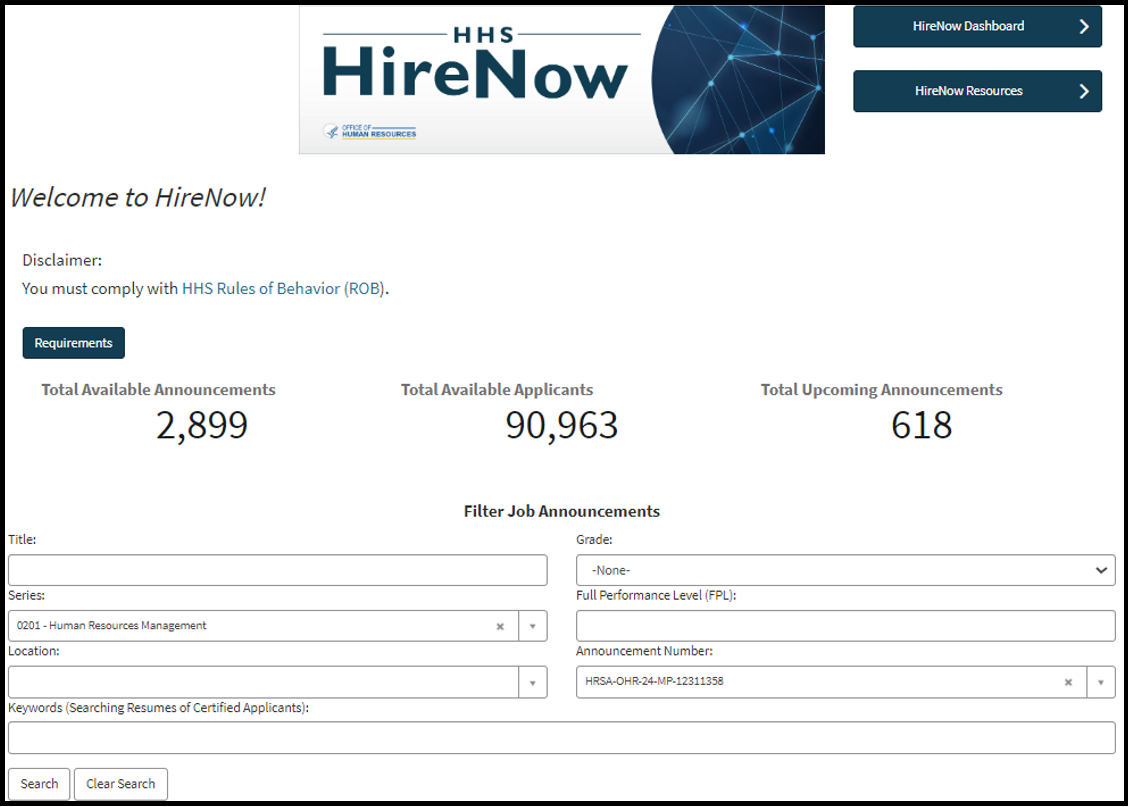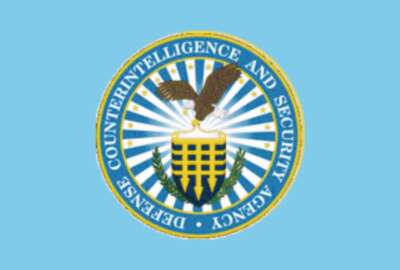Sponsored by Workday and AWS
‘An extraordinary opportunity’: How HHS uses shared certificates in hiring
At the Department of Health and Human Services, using shared certificates, in some instances, has cut the agency’s time-to-hire in half.
In just the last couple years, shared certificates have become an increasingly popular recruitment practice across government — and the impact is hard to miss.
At the Department of Health and Human Services, using shared certificates in some instances has cut the agency’s time-to-hire in half.
“We are seeing significant impacts in terms of hiring efficiencies, and we seek to further increase that share of hiring that takes place, not just for the HR shared service centers, but across the department,” HHS Chief Human Capital Officer Bob Leavitt said on Federal Monthly Insights —Trustworthy AI in the Workforce.
Over time, HHS has increasingly relied on shared certificates, particularly for the types of positions that are similar across many of the department’s organizations, Leavitt told Federal News Network. He called shared certificates “an extraordinary opportunity.”
“One, it uses our resources more productively, and two — and more importantly — from a candidate’s perspective, the sooner we’re able to follow up and eventually onboard a candidate, the better,” Leavitt said.
With shared certificates, agencies or offices that make a hire can then give their list of un-hired candidates, already determined to be qualified for a position, to another agency or office hiring for the same position. And hiring for the same type of job happens quite often, Leavitt said.
“There really are fewer unicorn positions out there than we all imagined,” he said.
Using shared certificates shortens the hiring process by using candidates who are already vetted and assessed by hiring managers and deemed qualified for a position. If multiple candidates are hired off of one certificate, that can cut time-to-hire even further.
“It affords selecting officials a quicker mechanism to bring people into the workforce and meet their needs more efficiently,” Kimberly Steide, associate deputy assistant secretary for human capital at HHS, said in an interview with Federal News Network.
That then allows HR managers to focus more strategically in terms of how they spend their time, Steide added.
And the process isn’t only helpful for hiring managers — using shared certificates benefits job candidates as well. They can be considered for positions they might not have otherwise known were out there.
“You can apply once and be considered for multiple vacancies as they come up open,” Steide said. “That expands that applicant’s reach in terms of what’s available to them.”
HHS shared certificates by the numbers
The idea of sharing certificates isn’t new, as it stems from the 2015 Competitive Service Act and subsequent guidance published in 2018. But the practice has gained much more traction in just the last few years.
At HHS, the use of shared certificates began years ago in just a handful of components, like the National Institutes of Health, the Food and Drug Administration, and the Centers for Disease Control and Prevention. But it’s more recently become a fully departmentwide effort.
Between 2020 and 2023, HHS hired nearly 12,000 employees off of shared certificates, and increased its shared certificate hires by 33%.
HHS hires made from shared certificates
| 2020 | 2021 | 2022 | 2023 | Total |
| 2,680 | 2,737 | 2,950 | 3,555 | 11,922 |
Note: Hiring numbers exclude FDA data, which was not immediately available.
Currently, HHS’ Office of the Secretary is the greatest user of shared certificates. Nearly half of all hires made from shared certificates in the last four years have gone through that office, including all of its staffing divisions.
This year, 11% of hires made through the Office of the Secretary’s HR shared servicing center have been pulled off of shared certificates.
“It might seem like a small number, but that’s coming from a vastly smaller number, and it is increasing significantly,” Leavitt said.
HHS involves SMEs in recruitment
For HHS, like many agencies, a crucial part of the recruitment process is involving subject-matter experts (SMEs) when writing job announcements and assessing candidates. Federal hiring experts say SMEs — usually officials working directly in the office that’s recruiting — offer a helpful perspective on what hands-on skills a candidate would actually need to be qualified for a position.
Especially with recruitment efforts that use shared certificates, HHS involves SMEs when writing solicitations, as well as when reviewing candidate pools.
There are, however, busier or more challenging times of the year for SMEs to be able to take the time to get involved in recruitment. But Leavitt and Steide said they’ve found the officials to be generally willing to offer their support, as it helps their office land a better job candidate at the end of the process.
“We do have to be attuned to the broader environment, but overall, people appreciate the opportunity to engage,” Leavitt said. “But we have to do our bit as well to make sure that the timing works.”
‘HireNow’: The back-end of sharing certificates
HHS’ recruitment arm is massive, involving thousands of hires annually. Underlying the entire recruitment process, HHS uses a platform called “HireNow.” The site compiles tens of thousands of active resumes for hiring managers to sift through when looking for a good fit for an opening at the department.
Right now, there are about 3,000 active job announcements on HireNow that are open to shared certificates, with another 600 or so upcoming announcements. And so far for 2024, HHS hiring managers have selected nearly 900 candidates from shared certificates on HireNow, along with dozens more pending selections.
Currently, there are more than 103,000 active resumes available on HireNow that are open to shared certificates.
“Of course, that’s a large volume to go through,” Leavitt said. “But we’re able to filter that by job series, by grade, and other factors, to help really narrow in on the available pool of candidates that hiring managers across the organization can refer to, rather than starting afresh.”

Once logged into HireNow, HHS hiring managers can view both current and upcoming job announcements employing shared certificates, as well as job announcements that won’t be using shared certificates.
For instance, right now, HHS is actively searching for supervisory physicians, health science administrators and data scientists — all of which have a shared certificate available for hiring managers to use. And coming soon, HHS is opening job announcements for management analysts and administrative specialists.
A list of several current job announcements, shared with Federal News Network, show many originating at the Health Resources Services Administration (HRSA). But with the use of shared certificates, those announcements could later be opened to other HHS components for hiring managers to review and select other candidates.

Application data on HireNow gets fed in through USA Staffing, a talent acquisition system run by the Office of Personnel Management. The system manages federal job applications that come in, and lets hiring managers track and assess applicants. On top of job applications sent directly to HHS, HireNow also intakes information from OPM’s broader talent pools portal meant for sharing certificates governmentwide.
Combining data from the two platforms “makes it easier for our selecting officials, so that they don’t have two places that they need to go to look for resumes,” Steide said.
When creating job announcements in HireNow, HHS staffing specialists will denote whether submitted applications will be shared more broadly. For announcements using shared certificates, candidates are automatically opted into the process, but have the ability to opt out. Once a shared certificate is issued, it remains active in HireNow for 240 days.
“That means that a candidate can apply and be considered for the next 240 days for anything that might come up across the department, which could be quite expansive,” Steide said.
Even with the success, HHS said it’s still working to consolidate the data and processes for sharing certificates. Although the HireNow platform is available for all HR offices to use, not all of them actually use it when going through the shared certificate process.
Shared certificates across government
Of course, HHS is far from the only agency that uses shared certificates — and for all agencies, the process of sharing certificates generally happens one of two ways.
One option is for OPM to initiate a governmentwide pooled hiring announcement. Agencies can then sign onto the announcement and select from a list of qualified job candidates for a common position.
The other option involves a specific agency initiating its own shared certificate announcement. That announcement can either stay internal to share just among different components within a large department, or otherwise get shared more broadly with agencies across government.
HHS uses shared certificates in multiple ways, and the announcements are not always departmentwide. For example, different divisions can also move shared certificates from job announcements they’ve already done in their specific office, and later post them to HireNow for other components to view and make selections.
To decide where and what positions to use shared certificates for, Steide said HHS often looks at where the most vacancies are. But it’s also not as simple as that.
“We’ve had a lot of success with pooled hiring for military spouses [and] for public health associates, which is a huge occupation that spans across the department,” Steide said. “So it really depends on where we have vacancies, where we have the most need, and … unique situations, where we can have one certificate that we can maximize across the department.”
For internally shared certificates, Steide said HHS will look across the department to figure out which occupational series would be the best fit for a pooled hiring effort.
Once an HHS component or office creates an announcement with a shared certificate, that component then has about 40 days to assess and select candidates, before the candidates become available for selection at HHS more broadly.
Depending on the number of certificates that are available on a job announcement, it can be a time-consuming process, but the value is clear.
Steide said, “the amount of effort and time that you put in on the front end just yields you a better product at the outcome.”
Copyright © 2024 Federal News Network. All rights reserved. This website is not intended for users located within the European Economic Area.
Drew Friedman is a workforce, pay and benefits reporter for Federal News Network.
Follow @dfriedmanWFED






